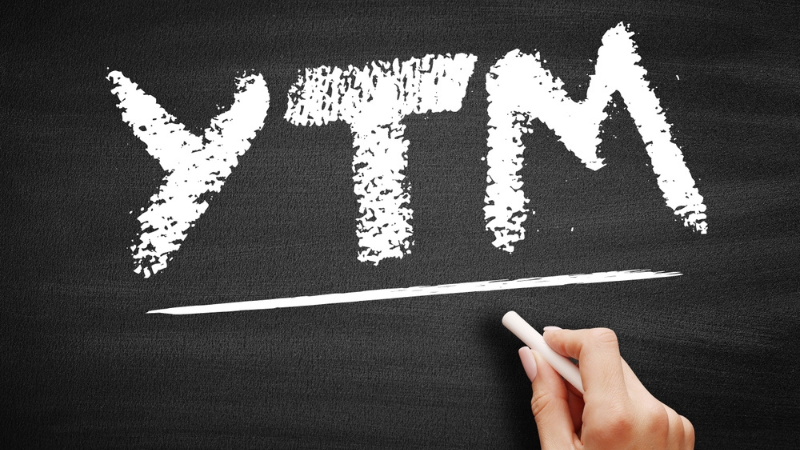
Every organization needs finance to meet its short-term and long-term needs. The long-term needs of a company are met by means of funds raised through equity and long-term bonds like debentures. For their short-term needs, there are various options that a company can access, commercial papers being one of them.
What are commercial papers?
Commercial papers are a short-term debt instrument that a company issues under section 45W of the RBI Act for a period of a maximum of 1 year. These instruments are in the nature of an unsecured money market instrument that is in the form of a promissory note and was introduced in 1990. Commercial papers are often issued by corporates or entities that have a high credit rating to meet their short-term requirements like funding a new project or meeting their short-term working capital requirements. The eligible entities that can issue commercial papers as per the guidelines of RBI are,
- Companies
- NBFCs
- Government Entities
- All India FInancail Institutions (AIFIs)
- Other entities that have a networth of Rs. 100 crores
- Co-operative Societies and Unions
- Limited Liability Partnerships
- Trusts
- Any other body corporate having a presence in the country or any other entity that is specially permitted by RBI for this purpose.
Read more : Can govt employees invest in stock markets?
Features of Commercial Paper
Some of the key features of commercial paper are:
- The tenure of commercial papers can be from a minimum period of 7 days to a maximum period of a year
- The minimum denomination of a commercial paper is Rs. 5,00,000 and multiples thereof.
- As the risk of investing in these instruments is higher as compared to investment in other debt instruments like Government bonds, the rate of interest on these bonds is also higher as compensation for the higher risks.
- Also, commercial papers are issued at a discount to attract investors.
What are the pros and cons of commercial papers?
Issuing commercial papers is a very common practice for corporates and other eligible entities aiming to raise short-term funds. These instruments are regulated by SEBI and RBI and therefore have a higher degree of stability as compared to other unsecured instruments.
The key advantages of commercial papers for the investors and the issuers are highlighted below.
- These are unsecured loans with the need for any collateral
- The cost of raising short-term funds through commercial papers is quite lower as compared to other options.
- The entities that have a high credit rating are permitted to issue commercial papers under the guidelines of RBI and SEBI after meeting all the necessary requirements. This boosts the confidence of the investors in the issuing entity even though they are considered to be riskier than other debt instruments.
- The maturity tenure of commercial papers is quite flexible and therefore, it can be a good investment option for every category of investors.
- Investors benefit through higher returns as compared to other short-term investment options.
After reviewing the advantages of commercial papers, let us now consider the disadvantages of commercial papers.
- Commercial papers can be issued by only entities that have high credit ratings and meet the minimum requirements as per SEBI and RBI, hence, it is not an easily accessible form of raising funds for every entity.
- While commercial papers can be issued for a flexible time period, liquidity is a concern in the secondary market.
- Eligible entities cannot issue any unlimited amount through commercial papers. The amount to be raised is restricted to the lower of the maximum amount approved by the Board of Directors or the limit specified by a Credit rating Agency
What are the types of commercial papers?
Commercial papers can be categorized under two broad categories and can be further classified under various types in each such category. The details of the same are mentioned below.
- Based on Uniform Commercial Code (UCC)
Based on the Uniform Comercial Code, the types of Commercial Papers are,
- Draft
In this type of Commercial Paper, there are three parties, namely the drawer, the drawee, and the payee. A draft is a written instruction by a person, ‘the drawer’, to another person, the ‘drawee’, to pay the stipulated sum of money to a third party, ‘the payee’.
- Note
This is the most common form of Commercial Paper and is also known as promissory notes. There are two parties as part of this transaction namely the maker and the payee. The maker is the issuer or the entity drawing the Commercial Paper as a written confirmation of paying the stipulated amount to the payee upon maturity.
- Check
This is a different kind of instrument with a separate set of rules and regulations as compared to usual Commercial Papers. A check is a special form of draft and the drawee is the bank in this case.
- Certificate of Deposit
This form of Commercial Paper is issued by a bank where the issuer acknowledges the acceptance of the deposit made by the depositor. This instrument is a special form of a promissory note and carries all the details related to the deposit like rate of interest, maturity date, and maturity value.
- Based on Security
- Secured Commercial Papers
Like secured debt of a company or any entity, these are Asset-Backed Commercial Papers where the collateral is provided against the short-term debt. The issuer normally creates a Structured Investment Vehicle and transfers certain financial assets that form part of the security for this type of commercial paper.
- Unsecured Commercial Papers
This is the traditional form of commercial paper and is issued without any security or collateral. The rating for this type of commercial paper is in the standard format as any commercial paper or bond based on the guidelines of RBI and SEBI
Conclusion
Commercial papers are a very common mode of raising funds for organizations on account of their flexibility and less stringent regulations as compared to equity issues. Investors also benefit from commercial papers on account of the higher interest rates and flexible tenure making them a good investment addition to their portfolio.
FAQs
The formula to calculate the yield on commercial papers is
Yield = (Face value – Price)/ (price x no of days to maturity) X 365 X 100
The target investors for commercial papers are investors with shorter investment horizons and higher risk appetites who are aiming to get higher returns through investment in debt instruments.
No. an entity that has previously defaulted on commercial paper cannot be allowed to access this market for a period of 6 months from the date of repayment of the previous obligation.
No. Related parties of the entity cannot invest in commercial papers.
The agencies part of the issue of commercial papers are,
-Credit Rating agency
-Registrar and Transfer Agent
-The issuing and the Paying agent
-Depository
-An independent Trustee in the case when the commercial paper issue has to be supported by a credit enhancement.
Yes. it is mandatory for the commercial paper issuing authority to disclose the purpose for such an issue on the offer document. The said purpose cannot be classified in the nature of general corporate expenses.
option trading is not permissible in the case of commercial papers, however, the issuing entity can opt for buyback of the instrument as per the guidelines laid by RBI and SEBI.



















